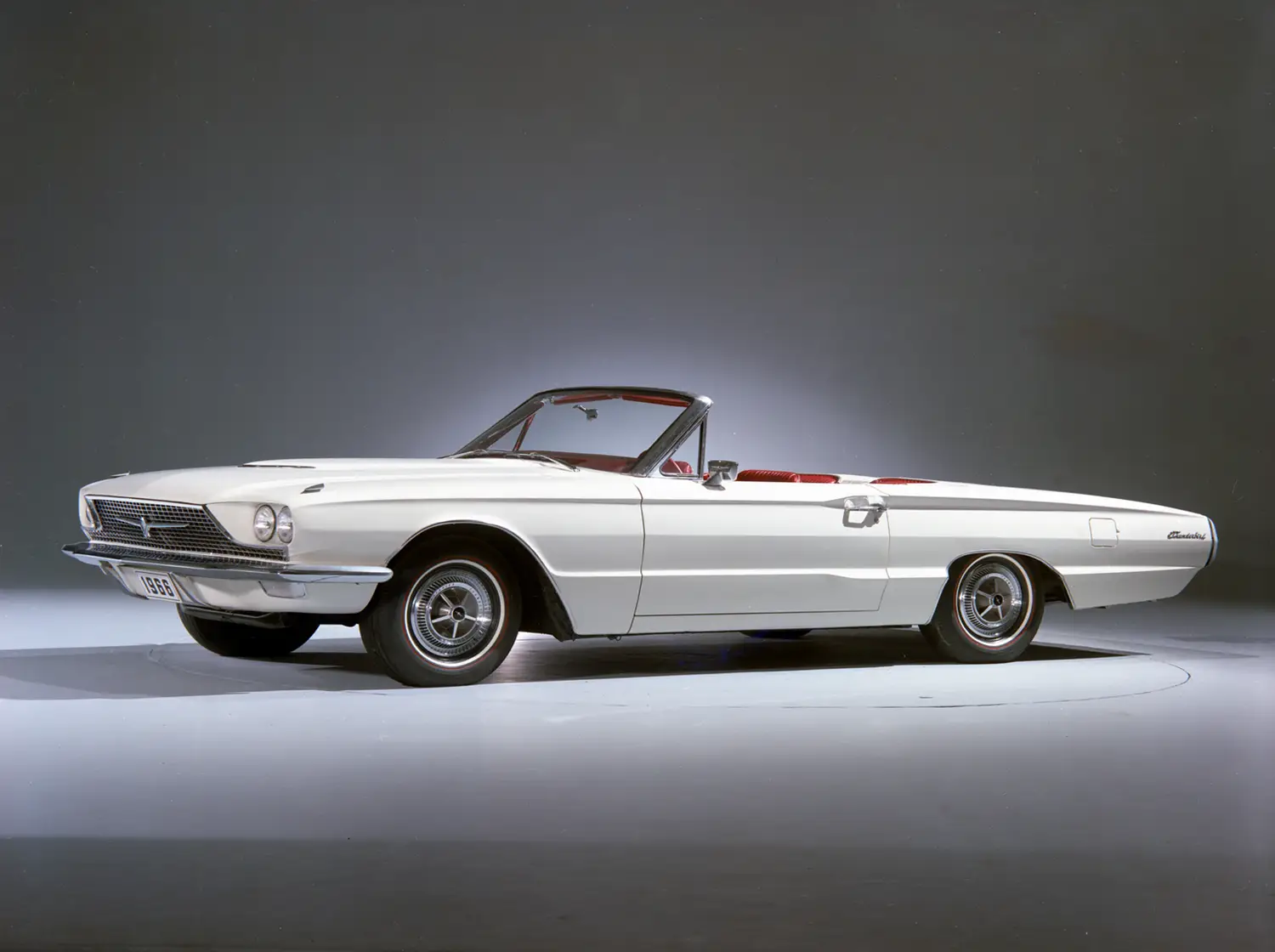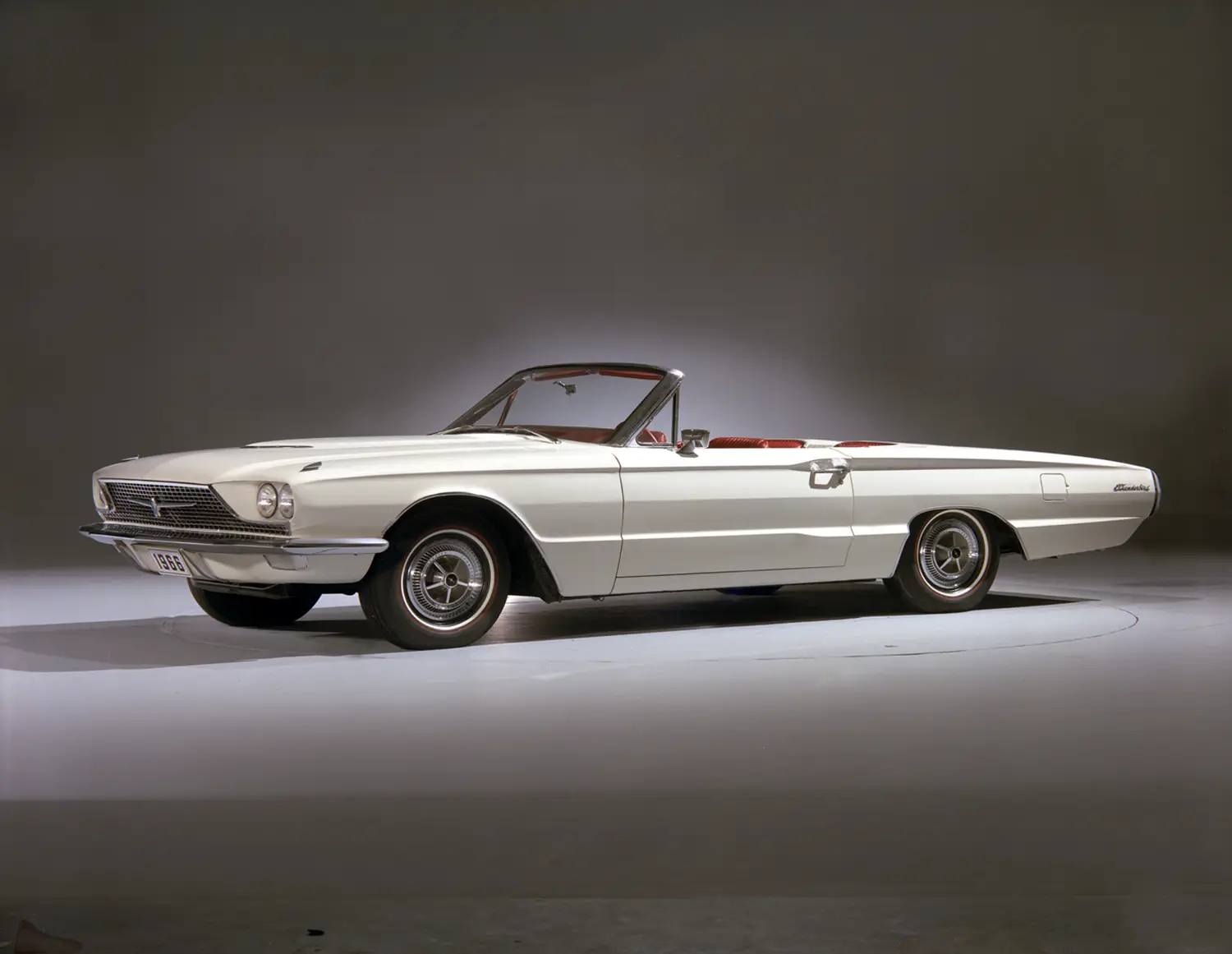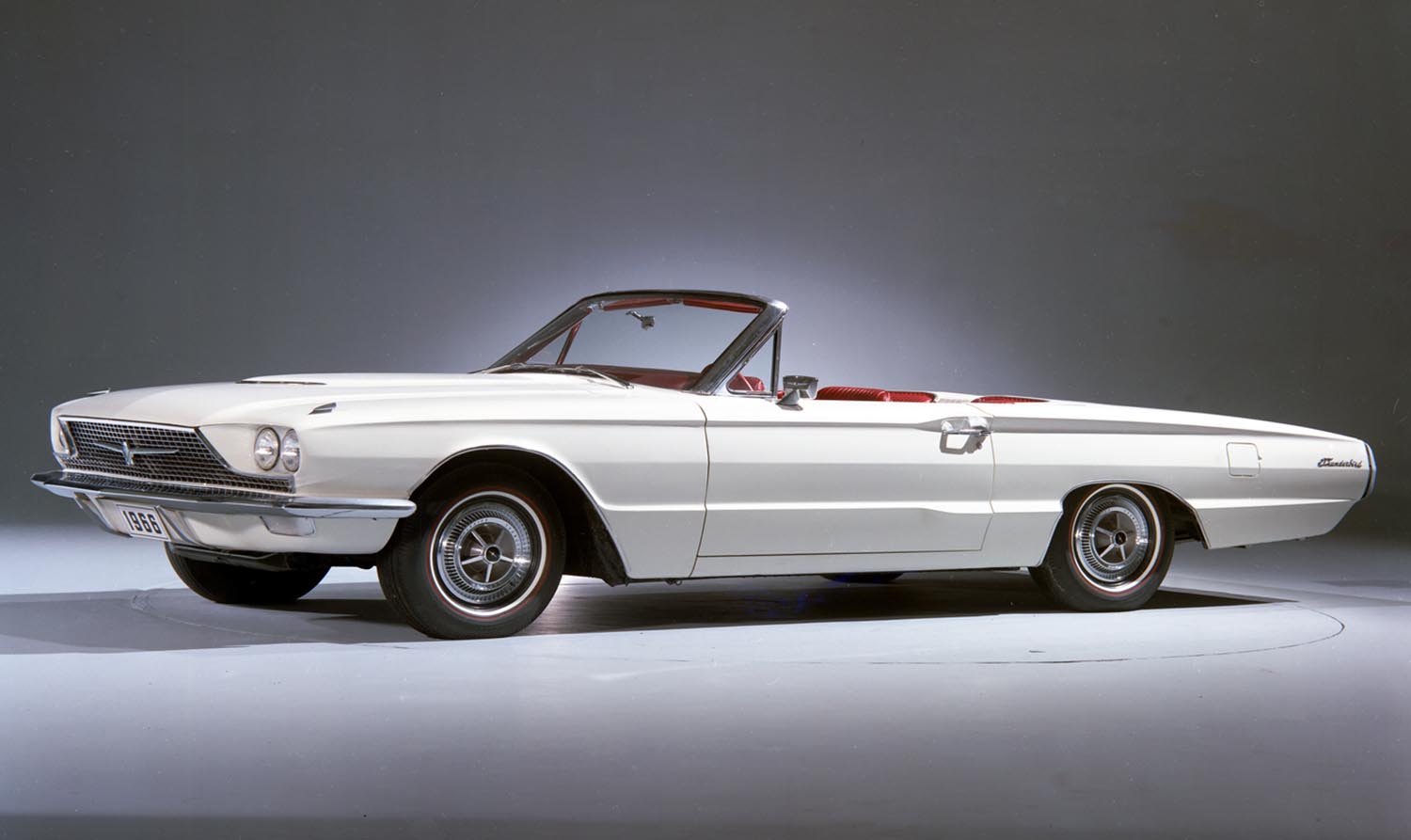
The mid-1960s were a time of great change. It was a time of bold style. The automotive world was no different. Amidst the muscle cars and family sedans, a different kind of vehicle emerged. It carved out its own niche. This was the personal luxury car. The 1966 Ford Thunderbird convertible stands as a pinnacle of that era. It was the final model of the fourth generation. It combined performance and comfort. It wrapped everything in an unforgettable design. This T-Bird solidified its place in history. It remains an icon for enthusiasts today. The convertible body style is especially timeless.
The Thunderbird brand started with a sporty two-seater. By 1966, it had matured into a large, formal four-seater. It was a cruiser. This evolution did not happen by chance. It was a calculated move by Ford. They wanted to appeal to a more sophisticated buyer. Someone who valued comfort as much as style. The 1966 model year brought new styling cues. It had a flatter hood and a re-shaped front end. The egg-crate grille with a large Thunderbird emblem was new. The rear taillights were revised. The backup lights were moved to the center. It gave the car a wider, more refined look. These changes made the car instantly recognizable.
The fourth-generation T-Bird featured a unitized body. Its wheelbase was 113.2 inches. This provided a smooth ride. The convertible model had a unique trunk lid. It would open electrically. The fabric top would then fold down. It disappeared completely under the lid. This was a complex but elegant solution. It gave the car a very clean look. This mechanism was first used in the Fairlane 500 Skyliner. It added to the T-Bird’s luxurious image. The car’s body was restyled for this generation. It was made to look more squared-off and formal.
The Thunderbird’s Interior Legacy
The interior of the 1966 Thunderbird was a highlight. It was designed for comfort and convenience. The wraparound dashboard had an aircraft-inspired design. It gave the cabin a futuristic feel. The large speedometer was centrally located. The steering column could swing away. This made getting in and out much easier. It was a hallmark feature. Luxury features were a priority. Power windows were a popular option. Air conditioning was also available. An AM/FM stereo could be installed. The seats were large, comfortable, and supportive.
Power and Performance: The Engines that Defined the T-Bird
The 1966 Ford Thunderbird convertible was not just about looks. It had serious power under the hood. The standard engine was the 390 cubic inch V8. This engine produced 315 horsepower. The car was equipped with a three-speed Cruise-O-Matic transmission. This transmission was a standard for the industry. It turned the power into a smooth action. For those seeking more performance, a new engine was optional. It was the larger 428 cubic inch V8. This engine was a significant upgrade. It produced a rousing 345 horsepower. It also had 462 lb-ft of torque. It offered a notable improvement in acceleration. The 428 could push the heavy T-Bird to 60 mph in about 9 seconds. The top speed was around 120 mph. The performance was impressive for its class. The ride quality was also a key part of the experience. The softly sprung suspension allowed for a comfortable ride. It absorbed bumps with grace.
The 1966 Thunderbird was the last of its generation. It marked the end of an era. It was a final statement. Ford would change the design for the next generation. This makes the 1966 model special. It represents a culmination of ideas. It is a symbol of personal luxury. It blended American muscle with upscale refinement. This set it apart from other vehicles. Its impact on automotive design was profound. It helped to solidify the personal luxury segment. The 1966 T-Bird stands as a testament. It shows how a car can be a symbol of freedom. It is a true classic. It continues to captivate collectors today. Its timeless appeal endures.
Disclaimer: Content on this site is for informational purposes only. Vehicle specs, pricing, and availability may change. Always verify details with official sources before making decisions. Opinions are those of the authors.
Source: Ford Heritage Vault

